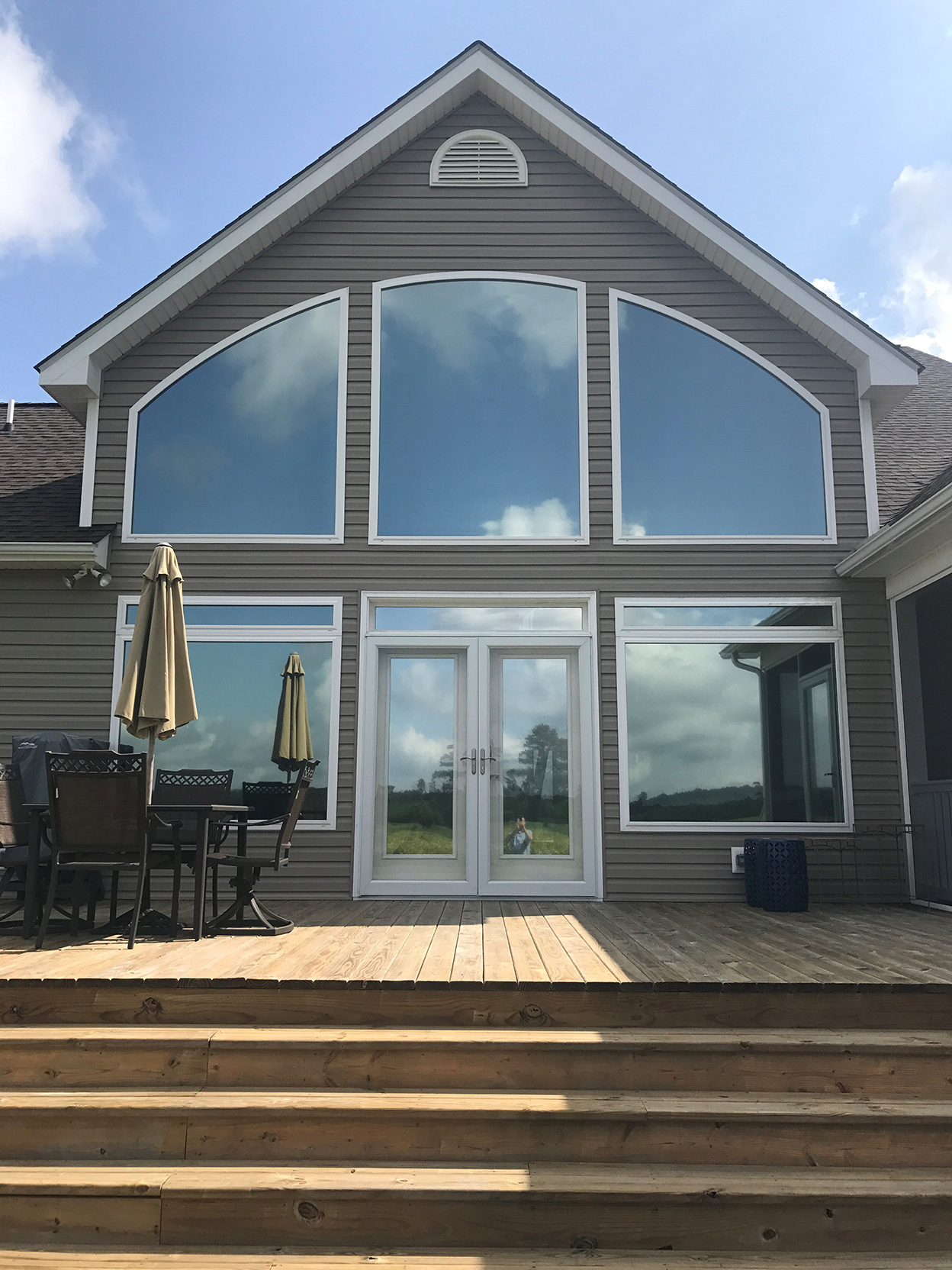Residential Window Tint: Rise Protection and Add a Layer of Security
Just How Residential Home Window Tinting Improves Your Home's Energy Effectiveness
Residential home window tinting presents a compelling remedy for homeowners looking for to enhance energy effectiveness within their living areas. By applying specialized films to windows, it effectively lowers warmth transfer, thus supporting interior temperatures and minimizing the demand for excessive home heating or cooling.
Understanding Home Window Tinting
Understanding window tinting is essential for home owners looking for to improve both convenience and energy efficiency in their home. Residential Window Tint. Home window tinting involves the application of a thin film to the interior or exterior surface of glass windows. This film can substantially modulate the quantity of sunshine and heat that goes into a home, thus affecting interior environment conditions
There are numerous kinds of window tinting films available, each with distinctive buildings. Dyed movies absorb solar energy, while reflective movies deflect it away from the glass surface. Ceramic movies use a balance of visibility and heat being rejected, making them a popular selection amongst property owners. The effectiveness of home window tinting is usually determined by its Visible Light Transmission (VLT) percentage, which shows exactly how much light can travel through the movie.
Benefits of Power Efficiency
Home window tinting not only boosts looks but additionally plays a considerable role in boosting energy performance within residential rooms. By reducing warm transfer through windows, colored films produce a more steady interior climate, which can cause substantial reductions in power intake for cooling and heating. This power efficiency equates right into lower utility costs, offering home owners with substantial long-lasting financial savings.

Additionally, home window tinting enhances the comfort of living rooms. By lessening glare and obstructing unsafe UV rays, colored windows develop a more positive setting, which can result in boosted wellness for residents. The defense against UV rays additionally assists preserve furnishings and flooring from fading, adding to the longevity of house items.
Just How Tinting Works
Tinting movies operate via a combination of innovative materials and modern technologies developed to control the amount of solar energy going into a home. Primarily composed of polyester, these movies typically include ceramic or metal particles that soak up and reflect warm. This dual ability permits them to considerably lower the penetration of ultraviolet (UV) rays and infrared radiation while allowing noticeable light to pass through.
The efficiency of home window tinting is measured by its solar warm gain coefficient (SHGC), which shows exactly how much solar power is sent through the window. Reduced SHGC worths are more effective as they represent greater warm denial. Furthermore, home window tints can include a variety of shades, allowing home owners to customize their visual preferences while boosting energy performance.
Additionally, these films function as an obstacle, protecting against heat loss during colder months by showing indoor heat back right into the space. This thermal insulation result complements the cooling benefits gained during warmer months, contributing to a balanced indoor climate year-round. By managing solar energy efficiently, description property window tinting not only improves comfort however likewise plays an important function in decreasing energy usage and reducing utility expenses.
Selecting the Right Color

There are different types of home window movies offered, including colored, metalized, and ceramic. Ceramic films provide exceptional warmth control without jeopardizing presence and are very durable, making them a prominent option.
Noticeable light transmission (VLT) is one more critical factor, as it informative post indicates the amount of natural light that can travel through the tinted glass. Property owners ought to choose a tint with a VLT that matches their illumination choices while still supplying appropriate glow decrease.
Furthermore, examining the solar warm gain coefficient (SHGC) can assist figure out just how well a color can obstruct warmth from sunshine. A Web Site reduced SHGC suggests much better warmth control, inevitably boosting power efficiency.
Setup and Maintenance Tips
Appropriate installment and maintenance are vital elements in taking full advantage of the advantages of property home window tinting. Experts also make use of specialized devices and techniques, which can enhance the sturdiness and performance of the tint.
Following setup, maintenance is crucial to prolong the life of the window film. It is recommended to wait at least 30 days before cleaning up the tinted windows to enable the sticky to treat totally.
Attending to these problems quickly can prevent further damages and keep power effectiveness. By adhering to these installation and upkeep ideas, home owners can guarantee their window tinting continues to provide substantial power cost savings and comfort for years to come.
Conclusion
In final thought, residential home window tinting offers as an efficient remedy for enhancing power performance within homes. By decreasing warmth transfer and blocking damaging UV rays, home window films contribute to decrease power consumption and enhanced interior comfort.
Window tinting entails the application of a thin film to the interior or outside surface area of glass windows. By decreasing warm transfer via windows, tinted films develop an extra stable indoor climate, which can lead to substantial decreases in power consumption for heating and cooling.The efficiency of home window tinting is gauged by its solar warmth gain coefficient (SHGC), which indicates how much solar energy is transmitted with the window. By handling solar power properly, household home window tinting not just enhances comfort but also plays an important function in minimizing energy usage and decreasing energy expenses.
By minimizing warmth transfer and obstructing dangerous UV rays, home window movies add to decrease power usage and enhanced indoor convenience.